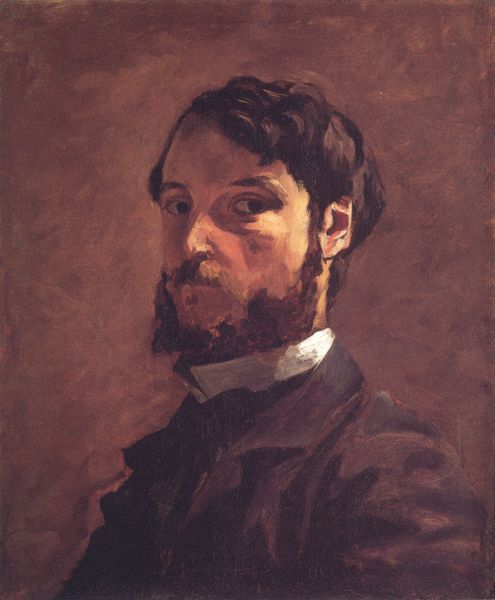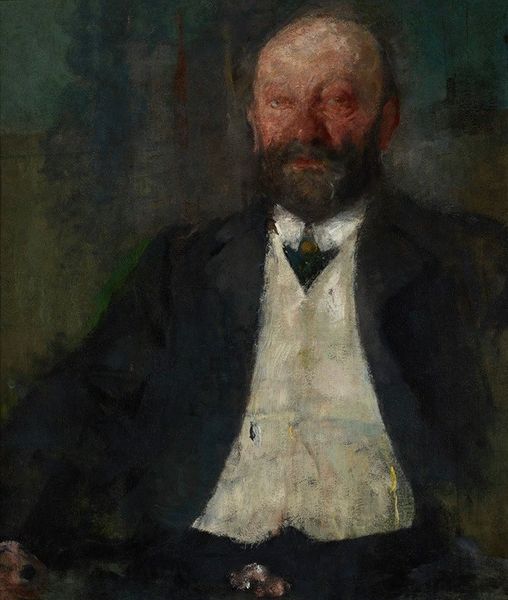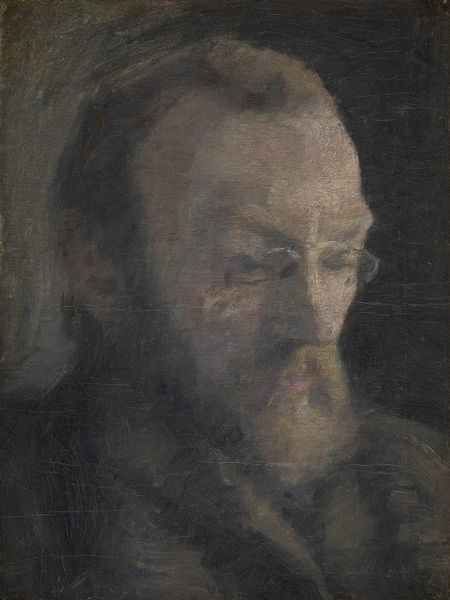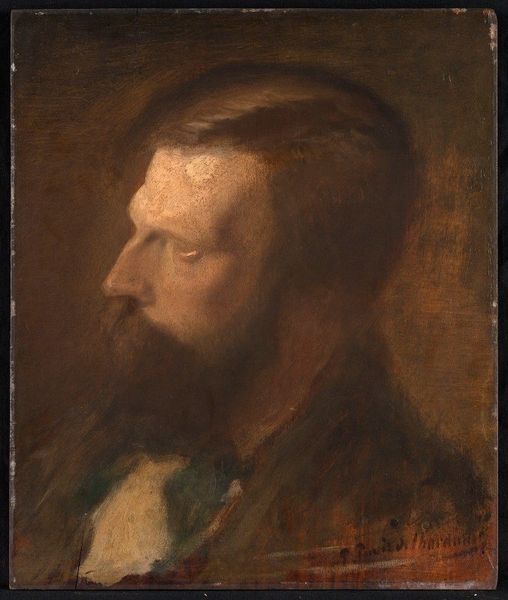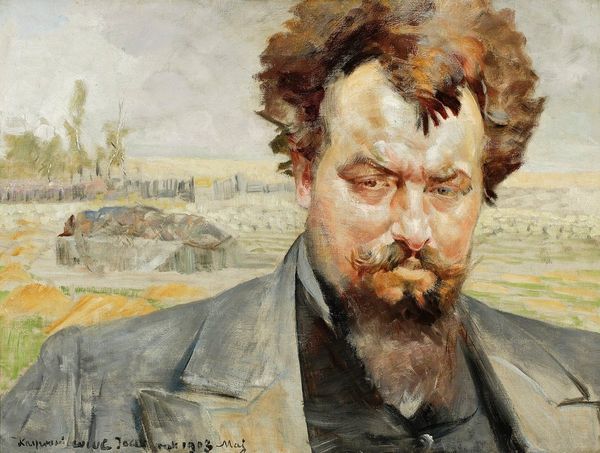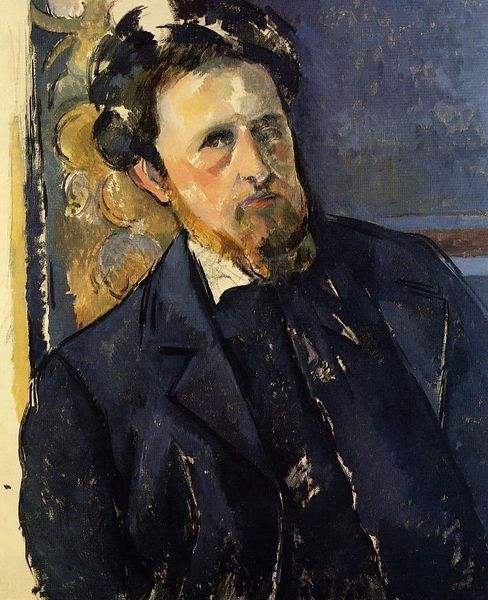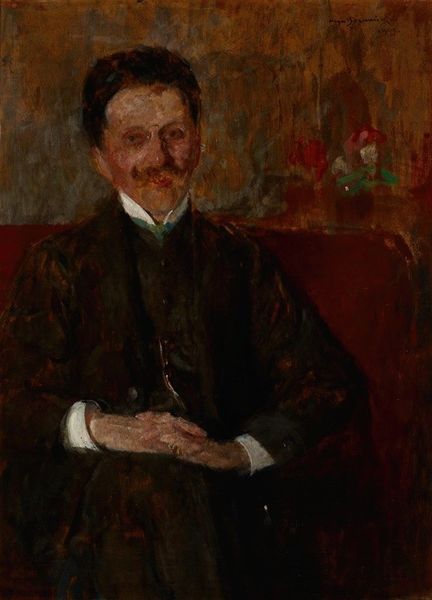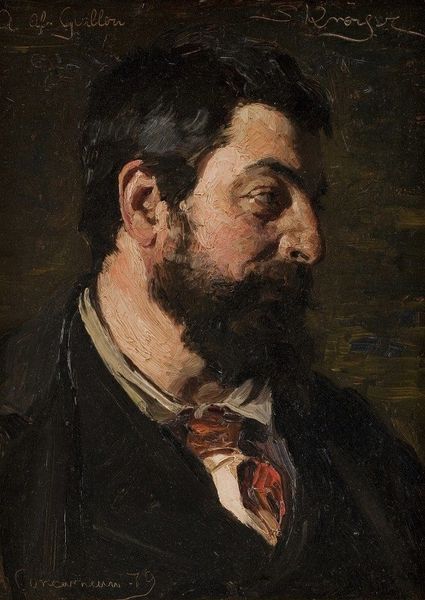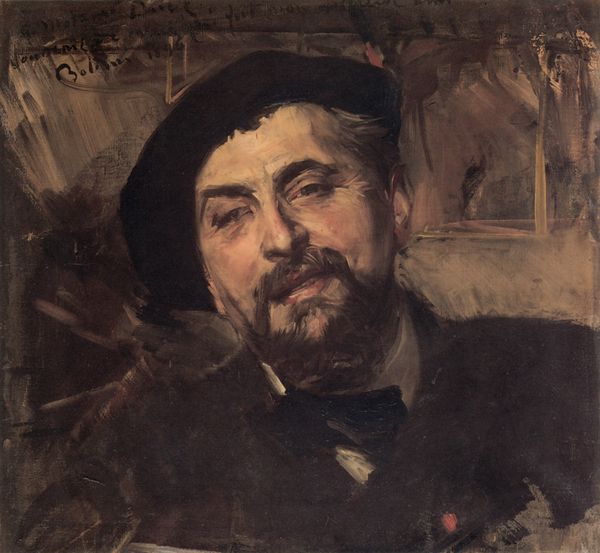
Copyright: Public Domain: Artvee
Editor: This is Leon Wyczółkowski's "Portrait of Jan Kasprowicz," painted in 1898 using oil paint. It's fascinating, especially the textural brushstrokes. What strikes you most about the materiality and creation of this piece? Curator: What I see is the artist’s attention to the *process* of making, the materiality. Consider how the rough, almost hurried brushwork isn’t trying to hide itself. Instead, it emphasizes the labor and the act of painting itself. How do you think that impacts the viewer's experience, considering who Kasprowicz was in Polish society at the time? Editor: I suppose it makes it more accessible? Like we're seeing the artist *at work* creating the portrait, rather than just the polished final result for a wealthy patron. Curator: Precisely. And that shifts the value. It's no longer just about depicting Kasprowicz’s likeness or status. It's about the value of labor, Wyczółkowski’s labor, and our engagement with that process. Oil paint, once associated with the elite, is now used to foreground a connection to manual work and artistic creation. It breaks down some of the traditional art hierarchy, doesn't it? Editor: Definitely. It almost democratizes the art-making. So you're seeing a commentary on art’s social context of creation itself and its effect on our engagement with it? Curator: Exactly. And we might even consider what that suggests about the artist's social consciousness, their intentions, the value of their contribution and place of art's *function* in society! It goes beyond merely documenting the sitter, inviting critical considerations about materiality. Editor: I had no idea a portrait could do so much! I always thought about paintings of important people as records, but considering its process is like getting another whole layer of meaning.
Comments
No comments
Be the first to comment and join the conversation on the ultimate creative platform.
